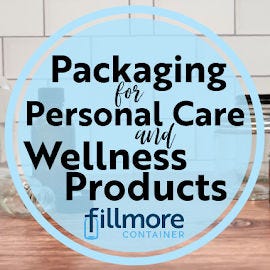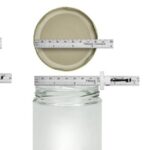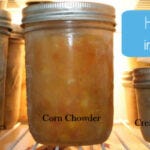
Switching lids styles: 2-piece lids to single-piece lids
As your business grows, you may be prompted to switch lid styles for a variety of reasons. It may be a branding choice, a requirement of your distributor or a wholesale account, or a process authority requirement for your product. Whatever your reason, there are several important things to consider when switching lid styles: 2-piece lids to single-piece lids. In this post, we’ll address those points which will also serve as a reference in troubleshooting if you have already made the switch and are experiencing sealing challenges.
The differences in the lid styles & why they matter
As you consider switching lid styles, it’s important to understand key differences.
2-pieces vs. 1 piece Design: The 2 piece design (when applied properly) allows for easier escape of steam during processing, and also makes it easier to identify the point at which the plastisol meets the rim of the jar.
This matters because vacuum is only created when enough steam is forced out of the jar and/or there is enough of a differential in temperature as it cools. If the lid is applied too tightly, it will impede the movement of steam which can cause buckling as it tries to escape, or will reduce the potential vacuum created as it cools, causing seal failure or failure to pull down the button if present.
Differences in the Plastisol Formula: The plastisol formulation is proprietary for each manufacturer, and there are differences. How, specifically, we don’t know (because of the proprietary part). What we do know, is that the specifics of each formulation can impact the softness of the plastisol initially, and how it reacts to heat. This is one of the reasons why testing a small batch is valuable. It’s also worth reaching out to your supplier to see if there are parameters or considerations that they could discuss with you that aren’t published.
Differences in the Plastisol Application: Manufacturers may have different standards when it comes to the application of the plastisol on the inside of the lid. The width and the thickness can have an influence on how far the lid is turned during application.
Differences in the tinplate & design with Button Lids: Manufacturers may differ in the strength of the tinplate used in their lids and in the design specs of the button. Stronger tinplate will require more vacuum to pull down the button if your lids must have them. A different button design may require more or less vacuum to pull it down. If you don’t have an agency requiring you to use a button lid, you may want to avoid the button altogether. If you are trying to establish relationships with wholesalers for your products, we recommend verifying whether there is such a requirement. Get more insight on button lids here.
Your Approved Processing Method
The specifics of your processing method have some influence in how lids are prepped and how they are applied. If you’re considering switching lid styles, make sure it’s compatible and that you’re using the best application practices.
Water Bath Processing: For this process, lids to not have to be preheated. If the plastisol is preheated, there is the risk that it will be too soft when you apply the lid, making it difficult for the steam to escape properly during the water bath. It is crucial to determine the proper turning torque and apply it consistently. If different individuals are hand applying lids, it’s important for the team to understand the importance of maintaining consistency.
Hot Fill & Set: Lids should be preheated, but not in excess. Jars should also be preheated, and the temperature of the contents should be maintained at the pour temp for the duration of the batch so that all components are hot at capping and you can capture the maximum potential to achieve enough vacuum during the cooling process. In this case, lids should be turned in more tightly. It is imperative that heat is maintained for all components and lid application happens as close to filling as possible in order to capture the heat and take advantage of the temperature differential.
Our Guide to Commercial Canning Lids explains the differences between the many commercial canning lids we carry.
Find more links and tips in our Food Processing Resources Page.





0 Comments